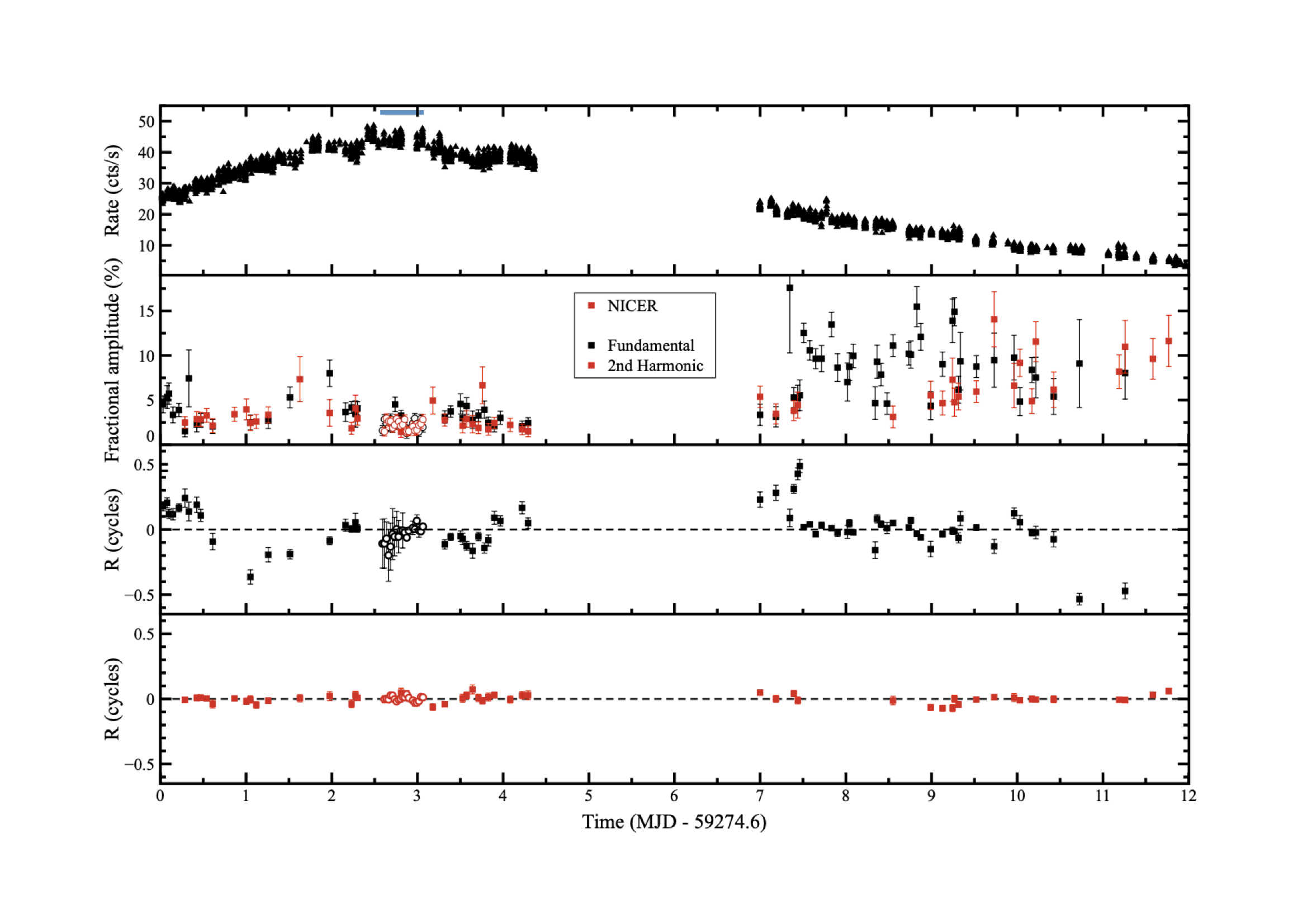NICER / ISS Science Nugget
for August 11, 2022
NICER reveals the anomalous fast orbital expansion of the eclipsing pulsar SWIFT J1749.4-2807
SWIFT J1749.4-2807 is a known rapidly rotating neutron star that forms a tight binary system with a sub-Solar companion star. The system was discovered by SWIFT-BAT in 2006, while coherent brightness oscillations at a period of 1.9 milliseconds were revealed for the first time by the Rossi X-ray Timing Explorer in 2010. The occultation of the neutron star X-ray emission by its companion every 8.8 hours makes SWIFT J1749.4-2807 the only known eclipsing accreting millisecond X-ray pulsar (AMXP, hereafter).
On March 1, 2021, NICER started monitoring the X-ray activity of SWIFT J1749.4-2807. Quickly after the trigger, the NICER team confirmed the source's new outburst by detecting the characteristic millisecond pulsations (Astronomer's Telegram #14428). Thanks to NICER's uniquely precise timing capability, it was possible to accurately determine an updated orbital ephemeris, which, combined with the previous outburst, enabled high-precision timing of this pulsar over more than a decade.
The long-term evolution of the orbital parameters of SWIFT J1749.4-2807 suggests, for the first time in these systems, a rapid increase in both the orbital period and the separation between the two stars in the binary system. Moreover, at odds with the other AMXPs, SWIFT J1749.4-2807 showed marginally significant evidence for a non-circular orbit. These results challenge the standard interpretation of mass and orbital momentum transfer in AMXPs. Possible scenarios have been proposed, including, e.g., i) a highly non-conservative mass-transfer process in which the Sub-Solar companion transfers enormous quantities of matter with only a tiny fraction (<0.5%) accreted onto the neutron star; ii) periodic redistribution of the mass in the Sub-Solar companion star that induces changes in the binary orbit by gravitational coupling.
Finally, an intriguing, although highly speculative scenario, proposed to explain coherently all the peculiar results obtained from the timing analysis of the pulsar, invokes the presence of another object gravitationally bound to the binary system, forming a hierarchical triple system.
This analysis was led by Dr. Andrea Sanna of the University of Cagliari (Italy), was recently accepted for publication in the astronomical journal Monthly Notices of the Royal Astronomical Society.

Figure:
First panel - NICER 0.5-10 keV light curve of the 2021 outburst of the accreting millisecond X-ray pulsar SWIFT J1749.4-2807 starting from March 1, 2021 (MJD 59274.1). Second panel - Time evolution of the fractional amplitude determined for the fundamental (black points) and the second harmonic (red points) components used to model the source pulse profiles created from the NICER (filled squares) dataset. Third panel - Fundamental pulse phase residuals in units of phase cycles relative to the best-fitting solution. Letters from a to d represent the time intervals selected to investigate the pulse profile shape evolution around a phase jump episode. Fourth panel - Second harmonic pulse phase residuals in units of phase cycles relative to the best-fitting solution.
<< Previous
Main Index
Next >>